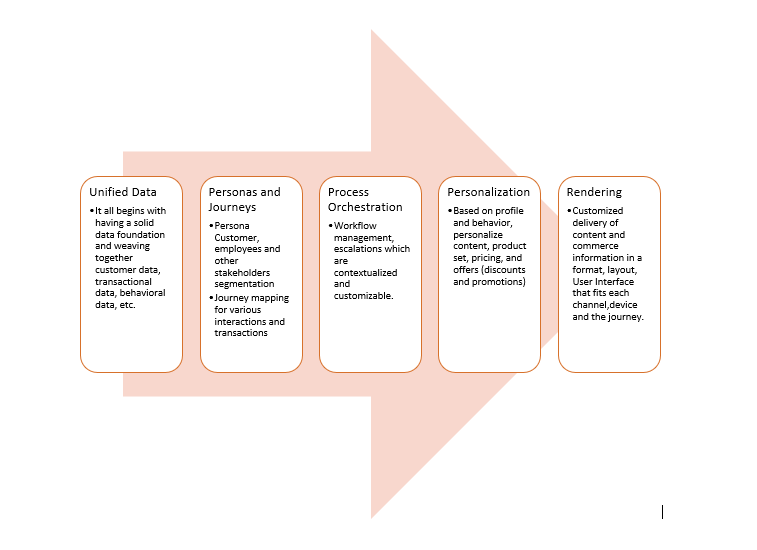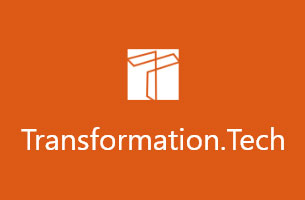Today, optimizing the customer experience across the omnichannel is the holy grail. Enterprises rely on Digital Experience Management Software to plan and execute stakeholder experiences. Digital experience platforms are a gamechanger and are a transformation technology.
It is also called DXP Software or Digital Experience Platforms, and sometimes even Customer Experience Software. Irrespective of the name, the fundamental goal of these software tools is to enhance user interactions, transactions, and overall experience.
What is Digital Experience Management Software?
Before we go further along, let us define Digital Experience Platforms.
Transformation.tech definition of DXP or Digital Experience Management Platforms:
“Digital Experience Platforms or DXP software orchestrates unified and personalized interactions to customers, employees, and other stakeholders across all tough points by combining user interface, content, application services, data-driven insights, and infrastructure to craft memorable experiences. DXP platform allows companies to craft optimized digital customer journeys.”
Forrester includes the following four capabilities: “Forrester distills a digital experience down to four solutions: 1) understanding the customer with data; 2) creating the experience with content; 3) tailoring that experience to fit the context with marketing; and 4) delivering value with commerce.”
Gartner defines a digital experience platform (DXP) as an integrated set of core technologies that support the composition, management, delivery, and optimization of contextualized digital experiences.
Why should Enterprises consider Digital Experience Platforms (DXP)?
In recent years, the marketing technology space has exploded with new generation tools in every imaginable niche. For example, the chief Martec website reports over 8000 different software tools in the marketing technology space.
Given this proliferation, there may be skepticism in CMOs (Chief Marketing Officers) and CIOs (Chief Information Officers) about the need for yet another platform.
However, suppose you are a legacy company that is not a digital native. In that case, your digital IT landscape likely has many bolt-on technologies that are being kludged together with duct tape and gum. This disjointed experience – both within and across the channels – combined with operational inflexibility causes constraints in online interactions and transactions. Considering sky-high customer expectations, it is a strategic imperative to up the ante in digital capabilities. Therefore, a purpose-built digital experience management platform is essential in the enterprise business and technology leaders’ arsenal.
How does a Digital Experience Management Software Work?
Based on the focus, the relative capabilities and inner workings of DXP Platforms may diverge, but in general, this is how it works:

Sample Architecture of a DXP Platform (Courtesy of EpicServer.com):

Enterprise Use Cases for DXP Platforms
There are many reasons to subscribe to digital experience management software. In reality, as digital touchpoints increase, a set of DXP tools is becoming table stakes. You may find one or more of the following use cases pertinent to your company’s current situation. Please also realize that not all the use cases below are the sole purview of DXP software: some require additional integrations.
- Serving personalized content based on the Prospect’s interest and stage of the funnel.
- Localizing a global site including language, catalog, pricing, and promotions.
- Supporting channel native interfaces and rendering (using Headless commerce and Headless CMS APIs)
- Seamless switching between channels and devices without losing context.
- Integrated offerings with product bundles, upselling, and cross-selling based on customer intent
- Dynamic pricing, discounts, and promotions
- Customer-specific pricing (B2B situations)
- Complex product configurations
- Continuous optimization to reduce shopping cart abandonment
- Streamlined cart and checkout for ease of transactions
- Remarketing and customized landing pages
- Centralized management of digital assets and media
- Heatmapping of the website and other analytics to drive optimization
- Natively formatted and optimized content, layout, and rendering based on form factor
- Transparency into Order to Fulfillment (with integrations to warehousing, shipping, etc.)
Benefits of Digital Experience Management Software
What are the benefits of using digital experience management platforms? In a single phrase: Not to become obsolete. To compete with digital native companies, it is imperative legacy enterprises adopt digital strategies and experience management software.
To elaborate on further reasons and benefits, here are a few benefits of DXP.
- DXP allows companies to transform from transaction-centric to customer-centric.
- Personalized content and context-sensitive marketing and customer communications
- Streamline customer experiences across the omnichannel
- Add new channels as they become available without having to retrofit from scratch
- Improve NPS (Net Promoter Score) by enhancing customer experiences
- Leverage influencers and brand advocates to amplify your sales reach
- Establish a continuous customer feedback loop that iteratively improves experiences
- In-built analytics to gain deep insights into customer behavior
- DXP capabilities can benefit the employee and other stakeholder interactions and experiences
- Lower customer churn understanding customer behavior
- Increase conversion rates to boost the ROI on marketing spend and increase the top-line growth
- Improve customer lifetime and lifetime customer value.
- Overall improvement of brand perception and brand equity
- Lower the burden on service and support staff, making digital assistants the frontline
- Better customer engagement leads to better retention
- Ability to upsell and cross-sell
Capabilities and Features of DXP Software Solutions
Digital Experience Platforms come in all sizes, forms, and shapes. Therefore, it is essential to prioritize what features, functionality, and capabilities are crucial to your company in a DXP platform rather than being tempted by the shiny bells and whistles.
We believe a best-in-class, purpose-built Digital Customer Experience Platform should comprise the following core capabilities and features. However, some of the features may be core to the platform, and others can are through a series of best-in-class integrations/APIs.
CEX or DXP Platform Top Features List:
- Unified Customer Data (Integration)
- Personalization
- Digital Journey Mapping
- Persona-based Segmentation
- User Behavior Analytics
- Parametric Search
- Intuitive Navigation
- Content Authoring
- Catalog Management
- Product Configuration using Multiple Parts and Offerings
- Merchandizing
- Template-driven Formating
- Price Customization and Dynamic Pricing including Customer Specific Pricing
- Discounts and Promotions
- Intuitive Shopping Cart
- Transactions and Order Management
- Multi-site and Multi-channel Capabilities
- Media and Digital Asset Management
- Retargeting
- Upselling and Cross-Selling and Bundles
- A/B Testing
- Campaign Management
- Conversational AI (either native or integrations)
- Ecommerce Features
- Forms and Data Capture
- CDN (Content Delivery Networks) Integration
- Quotes and Estimates
- Contracts Workflow
- E-Signatures
- Subscriptions (for periodically used goods and services)
- Globalization and Localization
- Multi-currency
- Shipping Calculations Integration
- Tax Calculation Integration
- Seamless Channel Switching
- API support for Headless Commerce
- API Support for Headless CMS (Content Management Systems)
How to Evaluate Digital Experience Management Platform Vendors?
Each company is unique to a certain extent, and hence the specific business and technical requirements of what you seek in a DXP or CEX platform may vary. But here are some guidelines on evaluating the DXP vendors.
DXP Vendor Evaluation Criteria:
- Support for Company-specific Use Cases
- Features to Support Core Business Requirements
- Experience in your industry/sector
- APIs and Integration Capabilities
- Support for Channels, Media, and Venues your company prefers
- Vendor Lock-in considerations (versus Open Standards)
- Cost (including total cost of ownership)
- Technical Resource Needs
- Deployment Options and Considerations
- Performance, Scalability, Extensibility, and Availability Requirements
- Information and Cybersecurity
- Support and Partnering
- Business and Financial Viability of the Vendor



